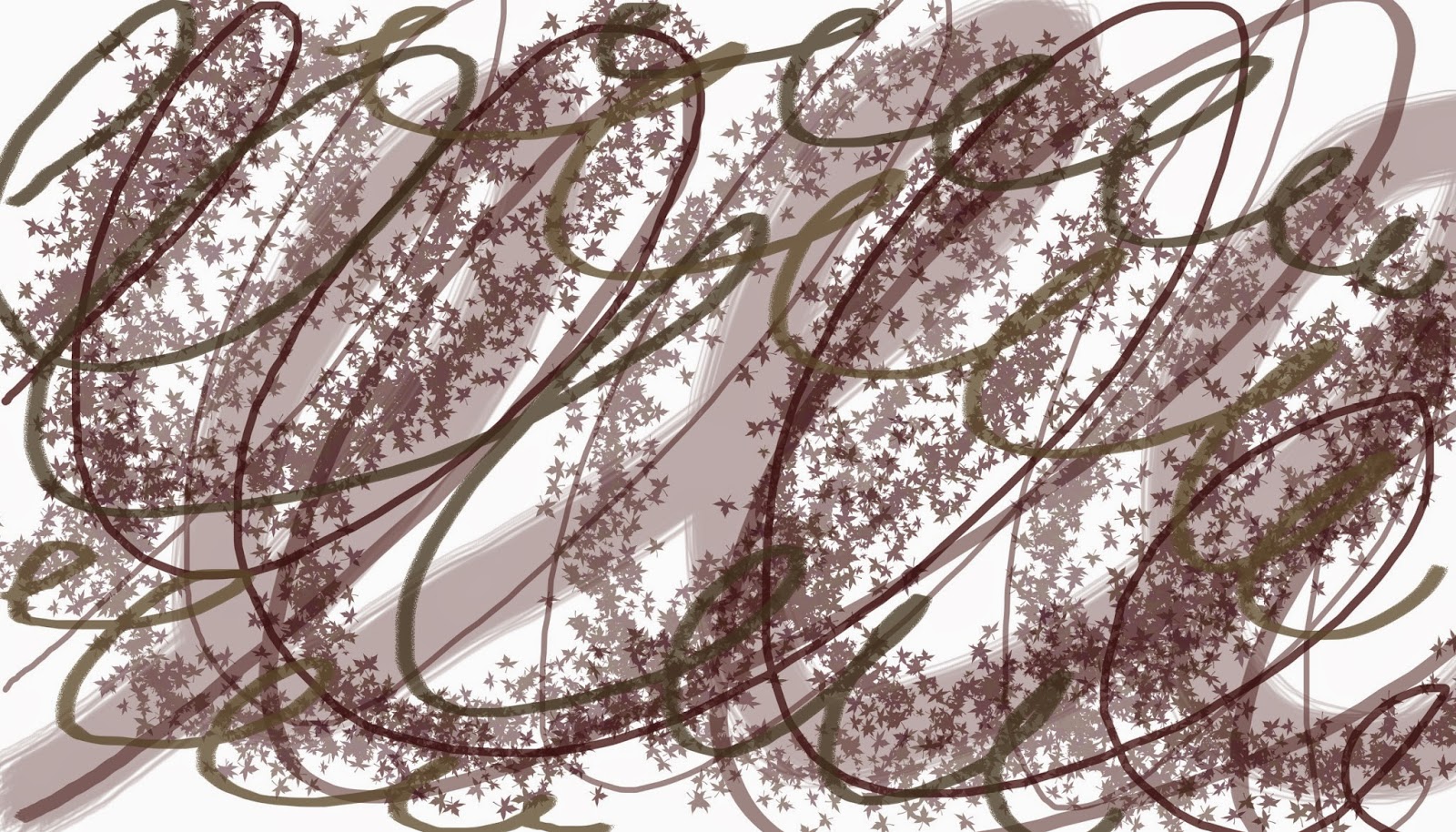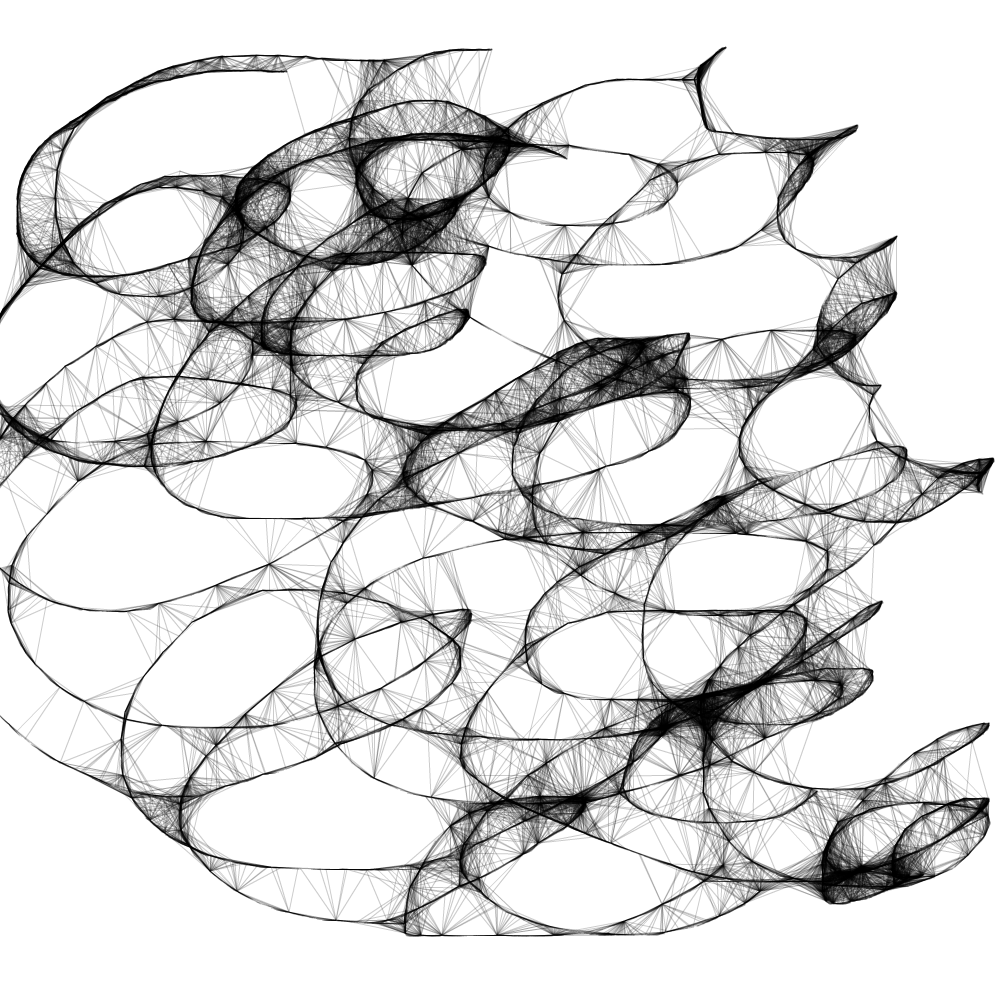Be careful what you wish for. Having had such a wonderfully exuberant time creating layers of spirals on paper, now I thought was the time for something more restful. I wanted to try and capture something of the shadowy moodiness of my spiral staircases. You'll have to see what you think.
The fabrics I used for most of my experiments were Habotai Silk and Silk Organza, though I have included cotton sometimes as I happened to have some prepared from a previous project and wanted to see how the colours would behave. In all cases I used Dylon dyes, in Antique Grey, Woodland Brown, Dark Brown and Jeans Blue.
3:1 below shows the result of half strength dye (2oz water to 1tsp. dye powder) on organza and left for just two hours. The dye is drawn on to the fabric with a pipette, the dryness helping to retain some of the curved shapes, though in the top of the picture the shapes have blurred as the fabric has become flooded with dye.
 |
| 3:1 |
I did not use Woodland Brown for this first dyeing session and was surprised how purpley the colours became. The fabrics used below are organza, Habotai silk and cotton.
 |
| 3:2 |
 |
| 3:3 |
 |
| 3:4 |
I started my second dyeing session having reread Leslie Morgan and Clare Benn's advice on tray dyeing. Below you can see wet pieces of silk and organza finger twirled closely together in the tray, squirts of dye applied in several colours and the hanks of thread laid on the top. This time I mixed the dye at double strength (2oz water and 2tsp. of dye powder) and let the fabrics remain for over four hours.
 |
| 3:5 |
Below are some of the results of this session.
 |
| 3:9 |
 |
| 3:10 |
 |
| 3:11 |
Below are probably rejects, the colours are disappointing and not really connected to my colour palette.
 |
| 3:12 |
 |
3:13
|
Below, in image 3:14, the results of a lovely shopping expedition at The Knitting and Stitching Show in Harrogate. Beautiful icy blues, metallic threads and beads and sequins.
 |
| 3:14 |
Below in 3:15 and 3:16 are two sets of hand-dyed threads -- complete with beautiful sunshine coming through the conservatory window, Spring's on its way.
 |
| 3:15 |
 |
| 3:16 |
As I've worked through this chapter I've begun to see in my mind's eye the fine running threads in brown and gilt and icy blue enriching the surface and hopefully these moody fabrics will fit the bill. Having needed a black undersheet to photograph the organza pieces it occurs to me that maybe I will need to consider layering from the very start? Possibly even consider dyeing some velvet and including that in my designs?





























